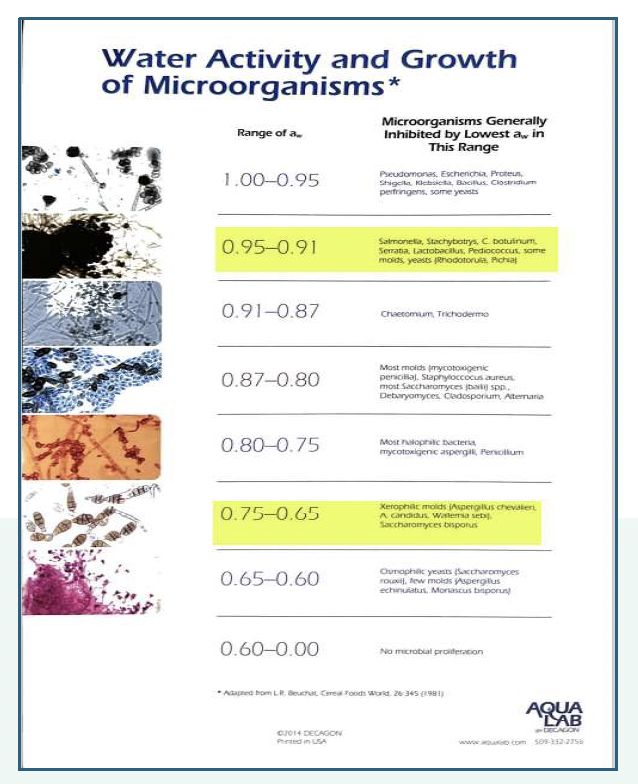What is Water Activity and Why is it Important?

What is Water Activity and Why is it Important?


Meet Ed
Instructor Ed Jones has over 30 years of experience in theindustry, has the title of MasterWater Restorer, is an Institute ofInspection Cleaning andRestoration Certification (IICRC)-approved instructor, and hasserved on the S500-2021consensus body committee todevelop the most recent standard.
Water activity abbreviated (aw), is the amount of free water available for microorganism growth on a substrate. aw is comparable to the equilibrium relative humidity (ERH) of a material, which is the relative humidity taken at the surface of a material. A reading of 80% relative humidity taken at the surface of a material equates to an aw of 0.8.
It is important because most bacteria have a minimum water activity (aw) requirement for growth of >0.95 (95% ERH). However, most molds that appear in the environment during the early stages of water damage require less moisture to grow. For these dry-tolerant (or xerophilic) molds, aw of 0.66-0.70 (66%-70% ERH) is sufficient to promote growth. Xerophilic molds include species of Penicillium and Aspergillus that may produce potent allergens and toxic substances.
This is where the guideline for keeping your home’s humidity below 70% relative humidity (RH) comes from. As you can see from the water activity chart, different species of mold need different levels of moisture to grow and proliferate. Water activity is a better predictor for mold growth than moisture content.
Xerophilic molds, like Penicillium/Aspergillus don’t need much moisture to grow so we typically use them as indicator molds that could indicate that organic food sources for mold, like wood materials and drywall paper, weren’t dried enough to stop their growth. They are typically one of the first molds to show up on a water loss, whereas Stachybotrus, as you can see on the chart below, needs lots of water to grow and typically takes weeks to grow and become visible, meaning the presence of Stachybotrus can be an indicator of chronic water damage.




